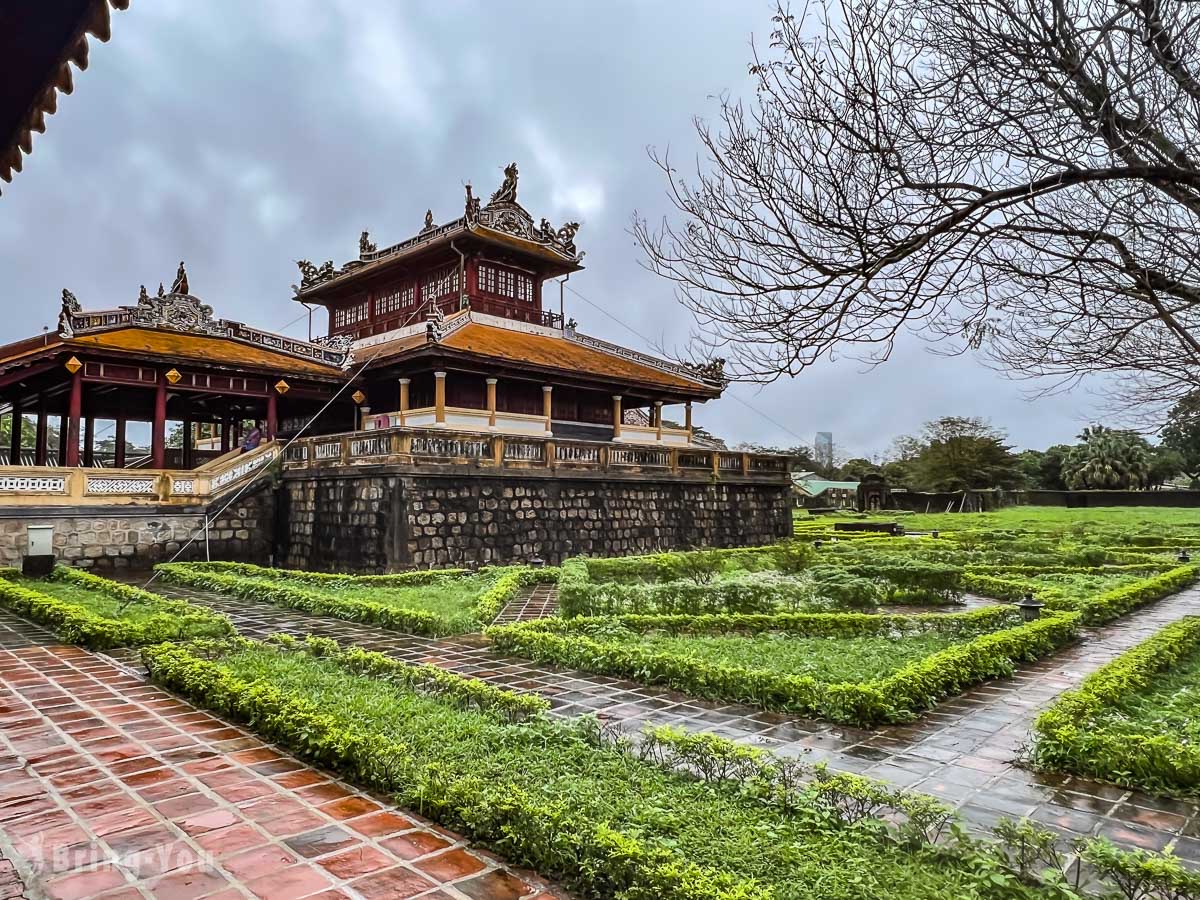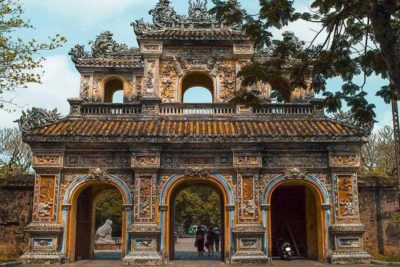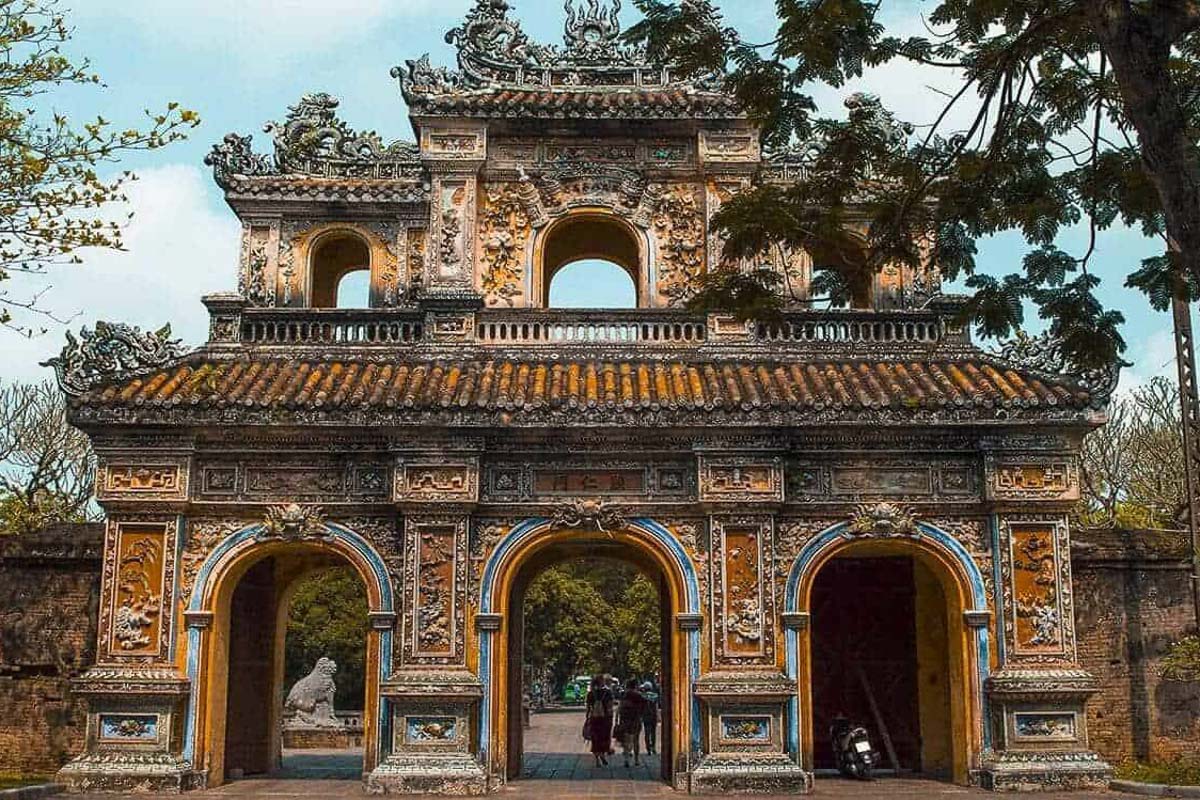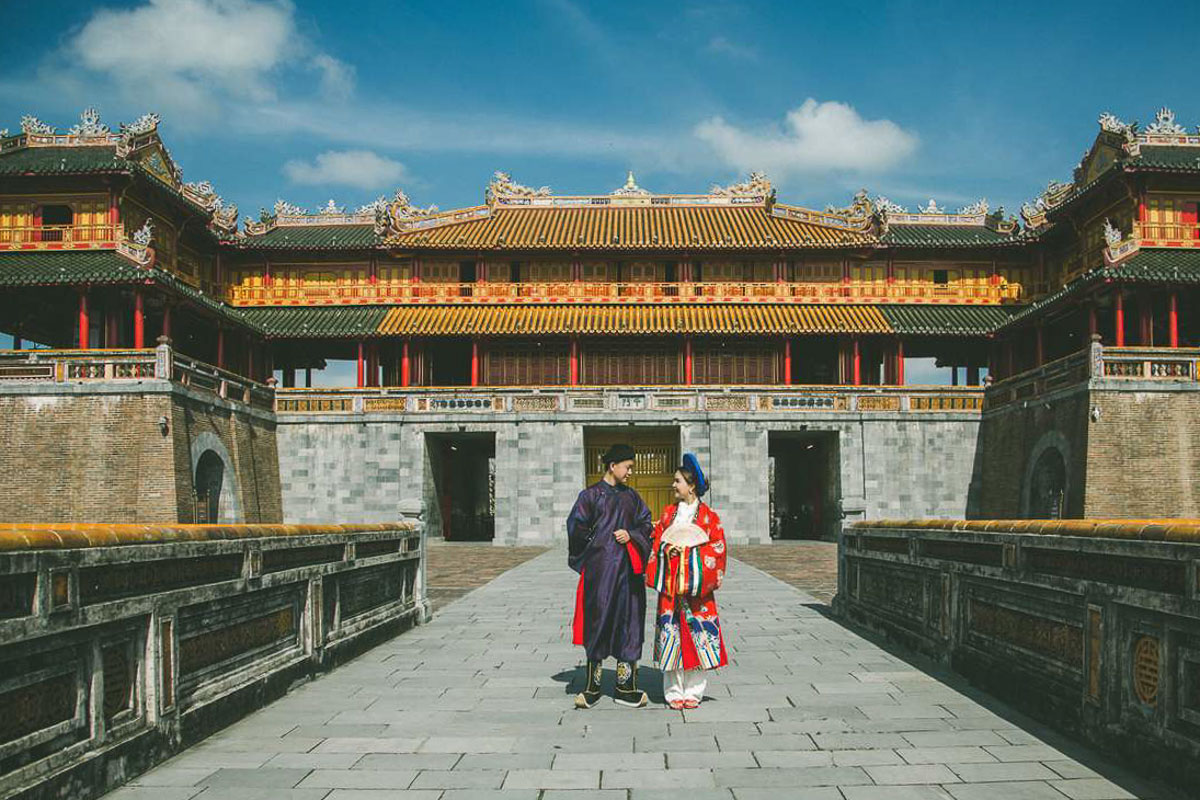
Despite the fixation, I don’t think Hue is boring at all.
There’s nightlife, there’s a vibrant food scene, but the most important thing is: that Hue is steeped in a long-lasting history that makes it feel like a time capsule.
Compared to the nearby Da Nang and Hoi An, Hue is way older, playing a crucial role as the center of Vietnam’s last imperial dynasty and Buddhist history.
Perfume River, Hue’s bloodline, snakes through the city’s most significant sites including the Imperial City and Thien Mu Pagoda.
Read on and discover the best activities to complete your Hue getaway on a high note.
Read More: 10 Best Places to Visit in Da Nang, Vietnam for An Enjoyable Vacation
Hai Van Pass
The first site you come across on the way from Danang to Hue is the scenic Hai Van Pass. Dubbed one of Vietnam’s most impressive passes, Hai Van reaches 20 kilometers in length at an altitude of 500 meters above sea level. With its mountaintop laden with clouds, Hai Van was recognized as the world’s top ten most scenic drive by The Guardian.
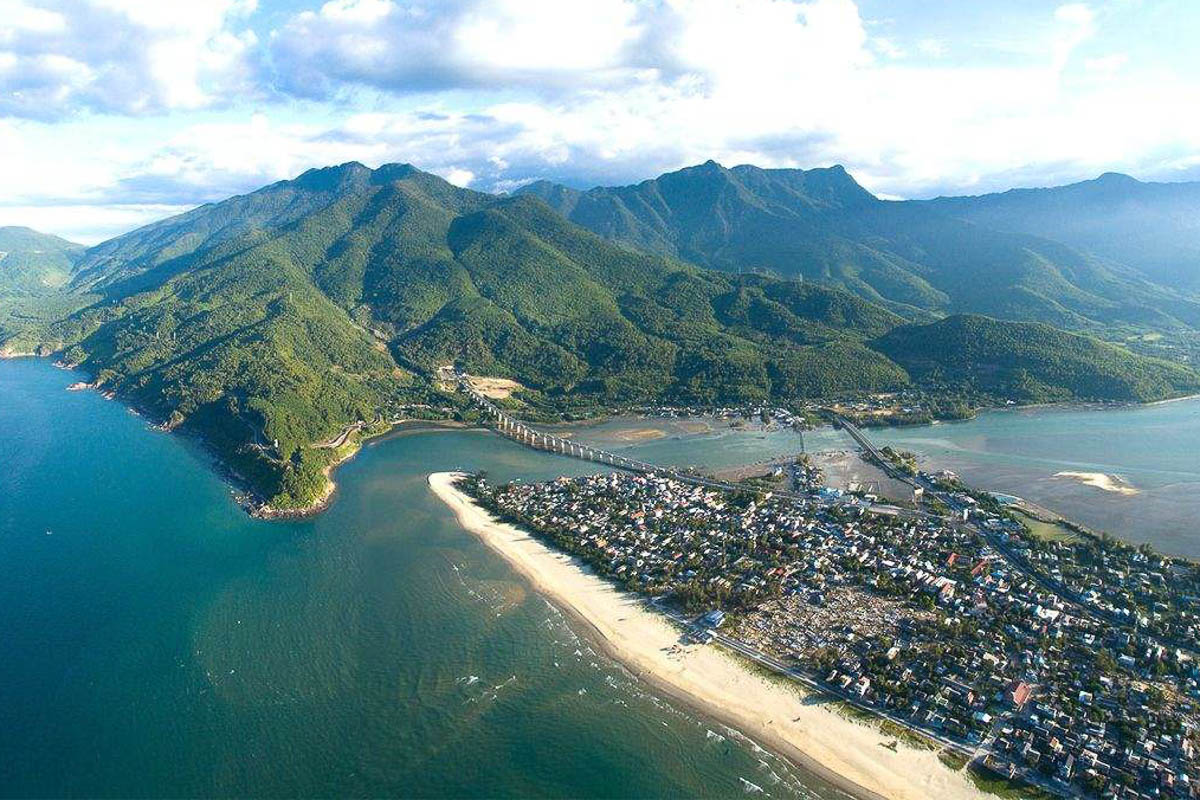
Lang Co Lagoon
About half an hour’s ride past Hai Van, Lang Co Lagoon appears at a distance with an irresistibly charming sandy stretch that’s developed by the lush tropical rainforest on the western wing.
The whole lagoon runs over 42 kilometers, steeped in the deep turquoise water and kissed by the white sand dunes. Worldbays once recognized Lang Co as one of the most beautiful lagoons in the world in 2009.
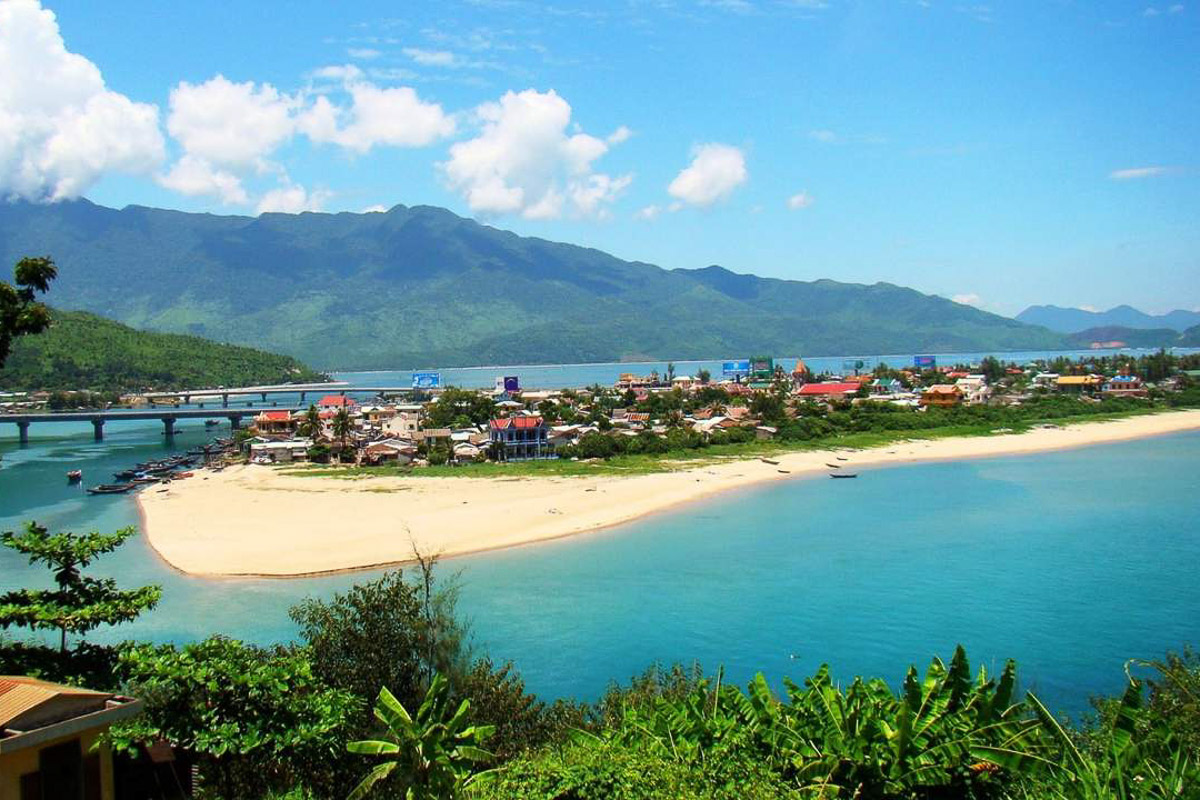
Mausoleum of Emperor Khai Dinh
The grand mausoleum is marvelous, speaking for the Vietnamese philosophy and optimized by the French architectural elements.
Undoubtedly one of the most visited and remarkable mausoleums in Hue, the one of Emperor’s Khai Dinh sits atop Chau Chu Mountain, marking the ultimate royal building erected in the Nguyen Dynasty.
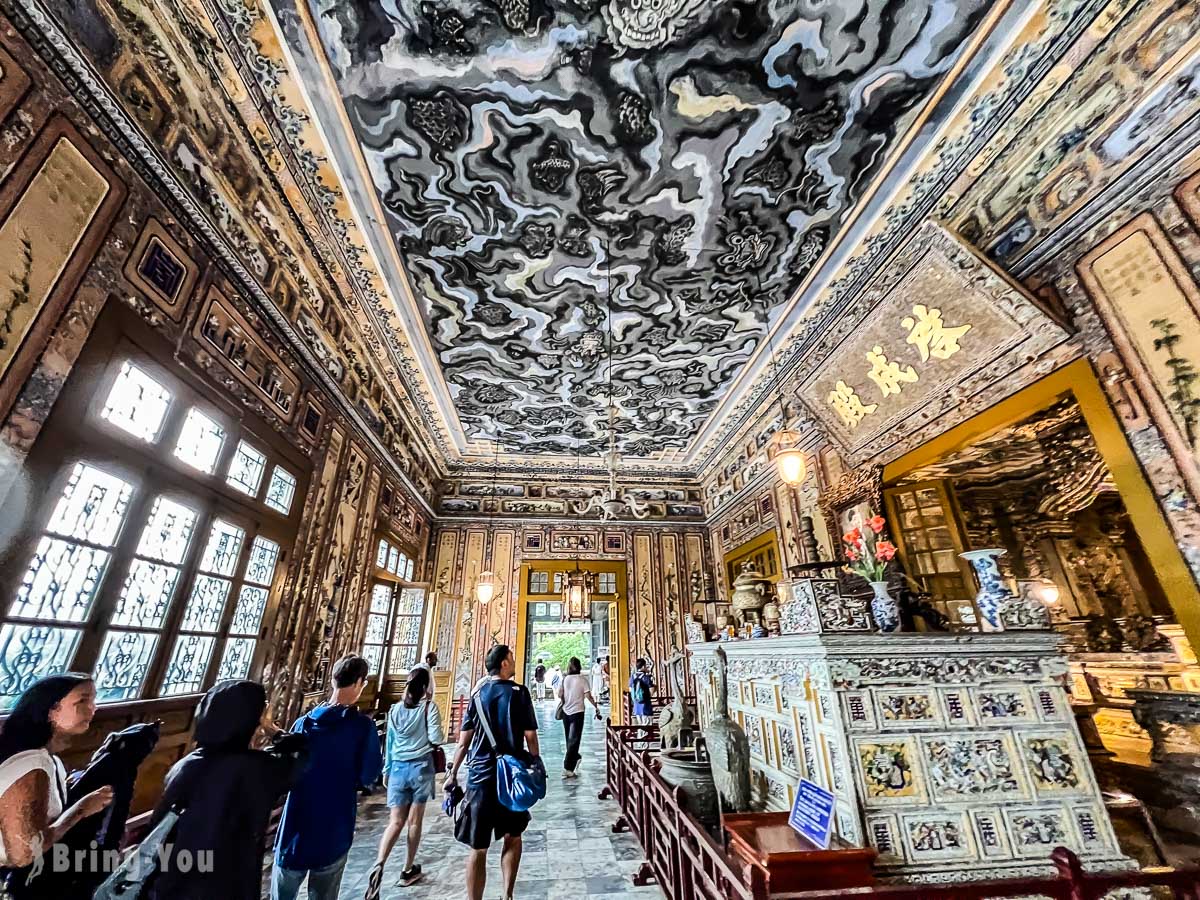
The flamboyant tomb is splashed out in a huge collection of mosaic art, a unique contrast to the rustic, weathered concrete exterior.
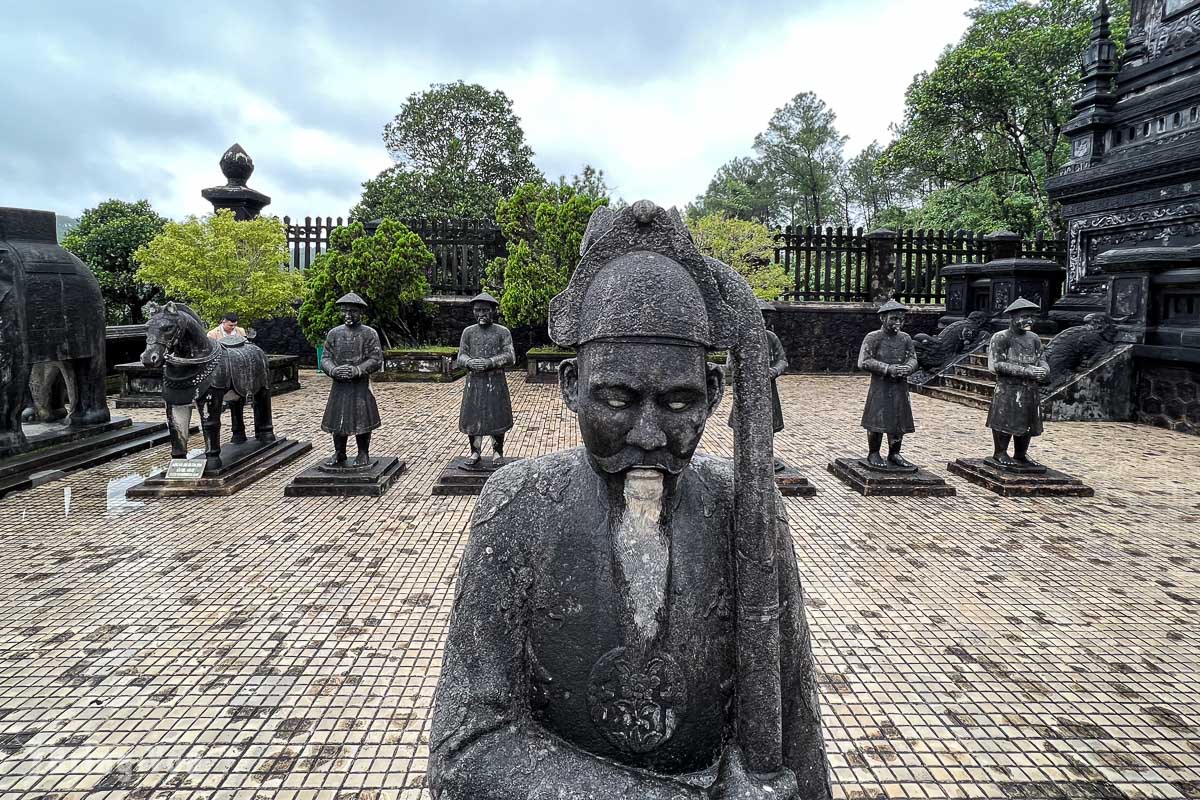
Thien Mu Pagoda
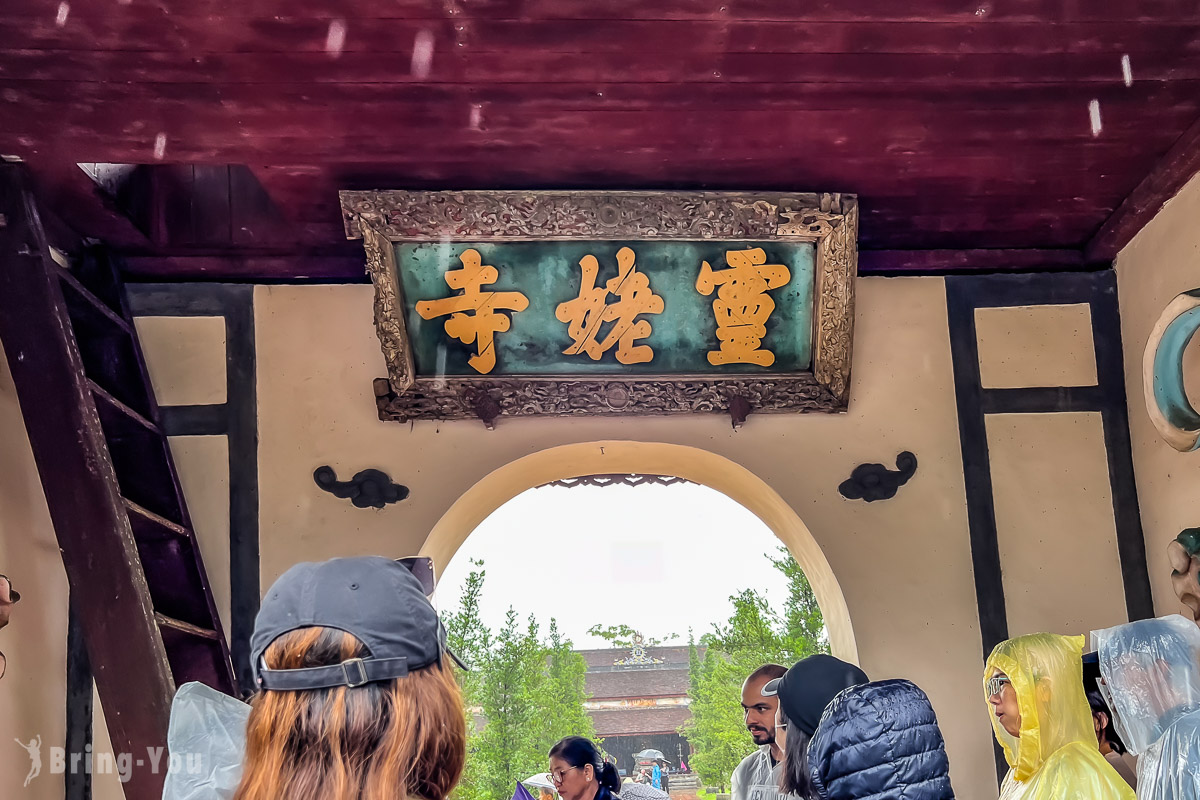
Just five kilometers west of Hue city center, you’ll find Thien Mu Pagoda, the oldest and grandest pagoda in this ancient capital. Recognized among the “Twenty Landscapes” of the Divine Land, Thien Mu Pagoda is a sight to behold.
From a distance, the pagoda grounds resemble a giant turtle carrying the ancient pagoda on its back, sipping from the Perfume River. This unique terrain and shape divide Thien Mu Pagoda into two distinct areas: the front area, symbolizing the turtle’s head, features commemorative architecture like stone steles and a bronze bell. Behind it, the turtle’s body shape houses the temple structures and monk’s quarters, separated by a three-entrance gate.
One of the most iconic symbols of the pagoda is the Phuoc Duyen tower. Standing 21 meters high with seven floors, this tower was built in 1844 and features a Buddha statue on each floor. Inside, a spiral staircase leads to the top floor, where a golden Buddha statue was once enshrined.
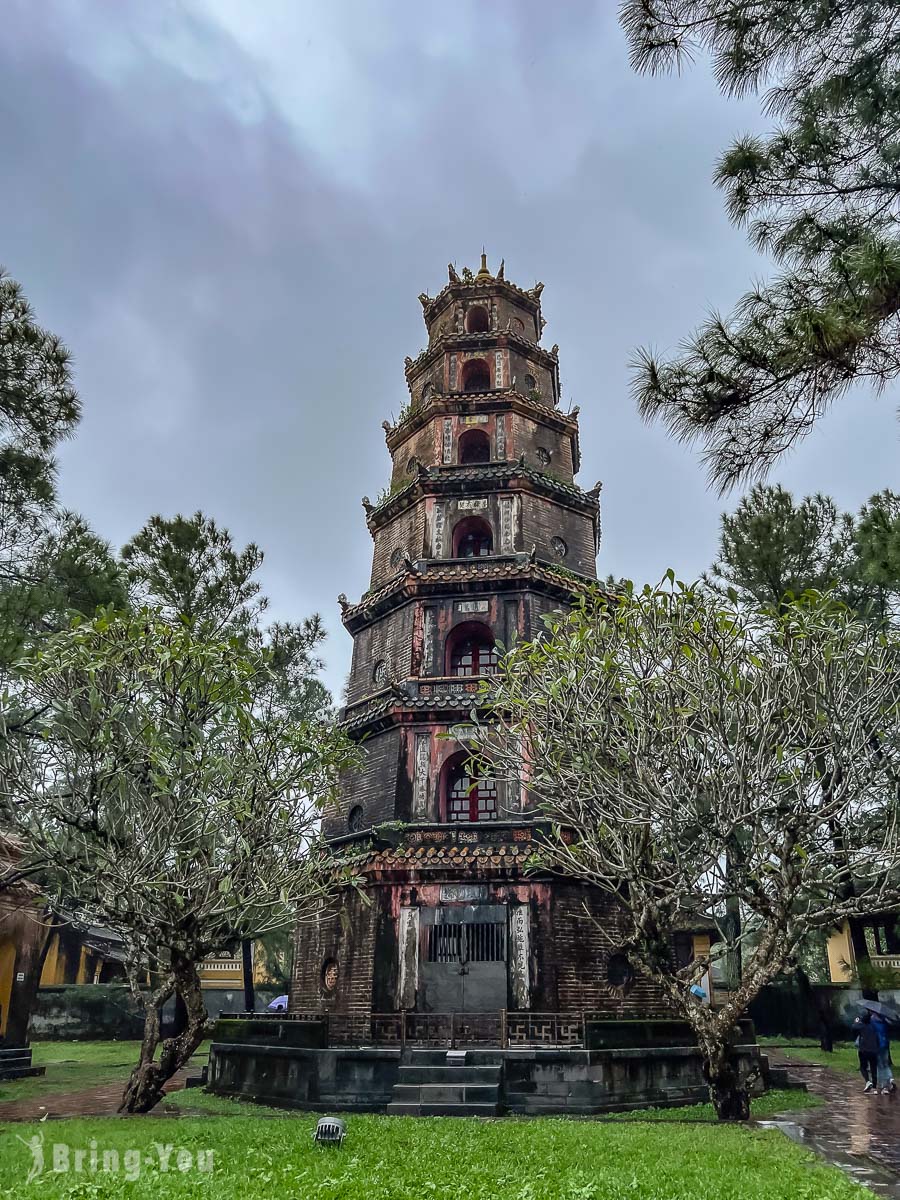
Each floor of the tower is adorned with windows decorated with elegant flat curved copper bars, allowing light to beautifully illuminate the interior. From the higher floors of the tower, you can enjoy a breathtaking panoramic view of the Perfume River and the distant Truong Son range.
Hue Imperial City
Imagine stepping back in time to the grandeur of the feudal courts! The Hue Imperial City is hands down the most talked-about attraction that Hue is known for.
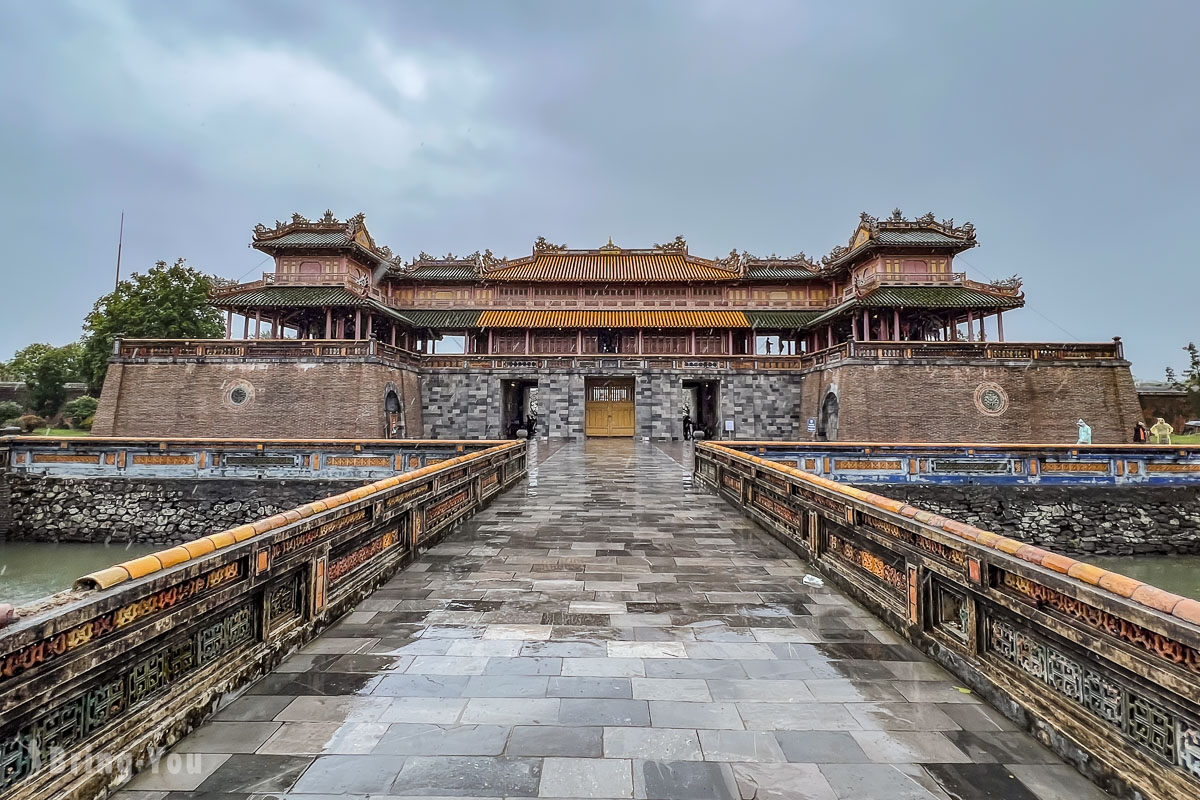
Serving as the royal seat of the Nguyen Dynasty between 1802 to 1945, the imperial city is split into the inner and outer city, with the Perfume River running in between.
Wrapped by a six-meter Vauban-style wall, the citadel is perfectly protected thanks to a moat system.
Built between the early 19th and early 20th centuries, Hue Citadel is a treasure trove of unique cultural features from Vietnam’s rich history. In 1993, UNESCO recognized this remarkable site as a World Cultural Heritage site, a testament to its enduring significance.
The construction of Hue Citadel was a monumental effort, spanning over 30 years and involving tasks like filling rivers, digging moats, and building formidable walls.
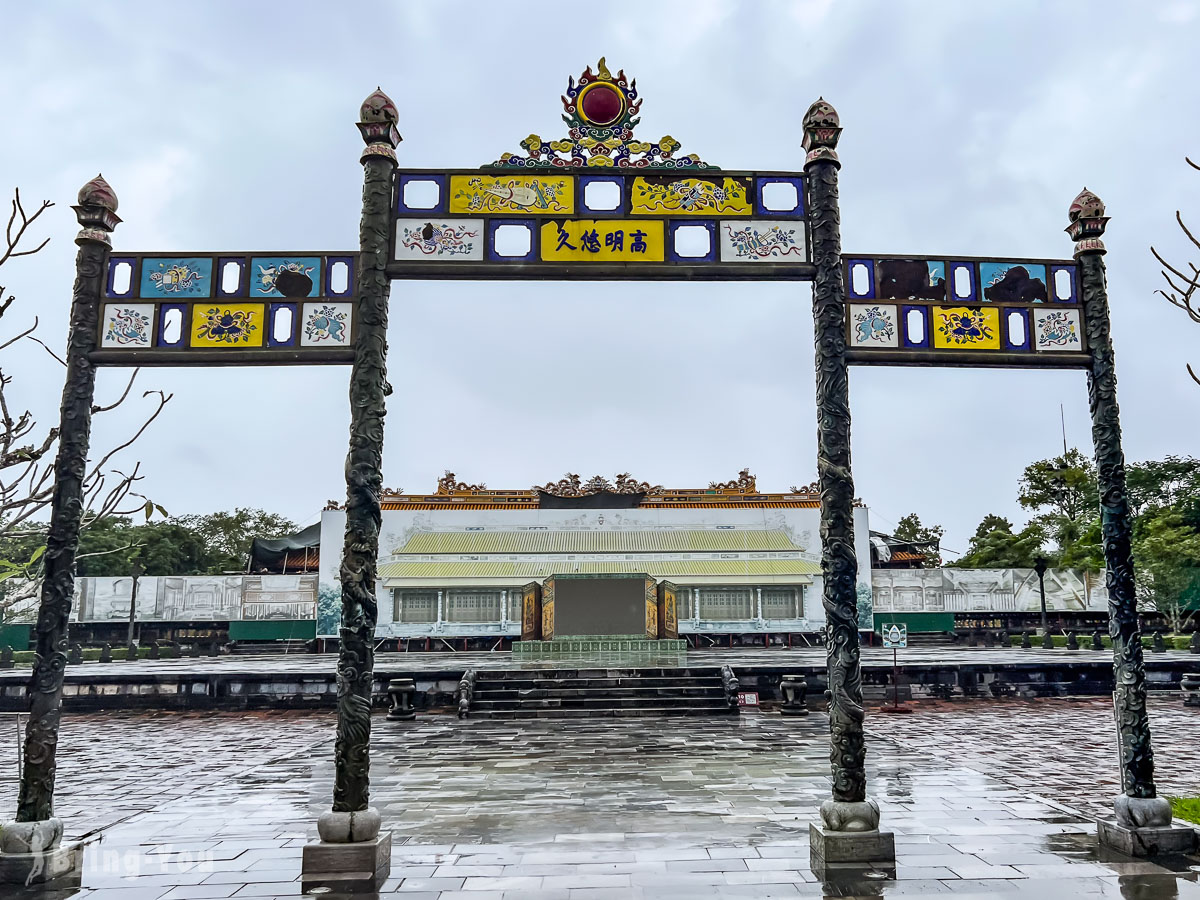
Today, as you stroll through the relics of Hue Citadel, you’ll be captivated by the majestic beauty of the palaces and the ancient, solemn temples and shrines.
This historical cluster includes the Imperial Citadel, where the king held court, and the Forbidden City, the royal family’s residence. Marvel at the splendor of landmarks such as Thai Hoa Palace, Meridian Gate, and Can Chanh Palace. Each corner of Hue Citadel tells a story, inviting you to explore and be enchanted by its timeless charm.
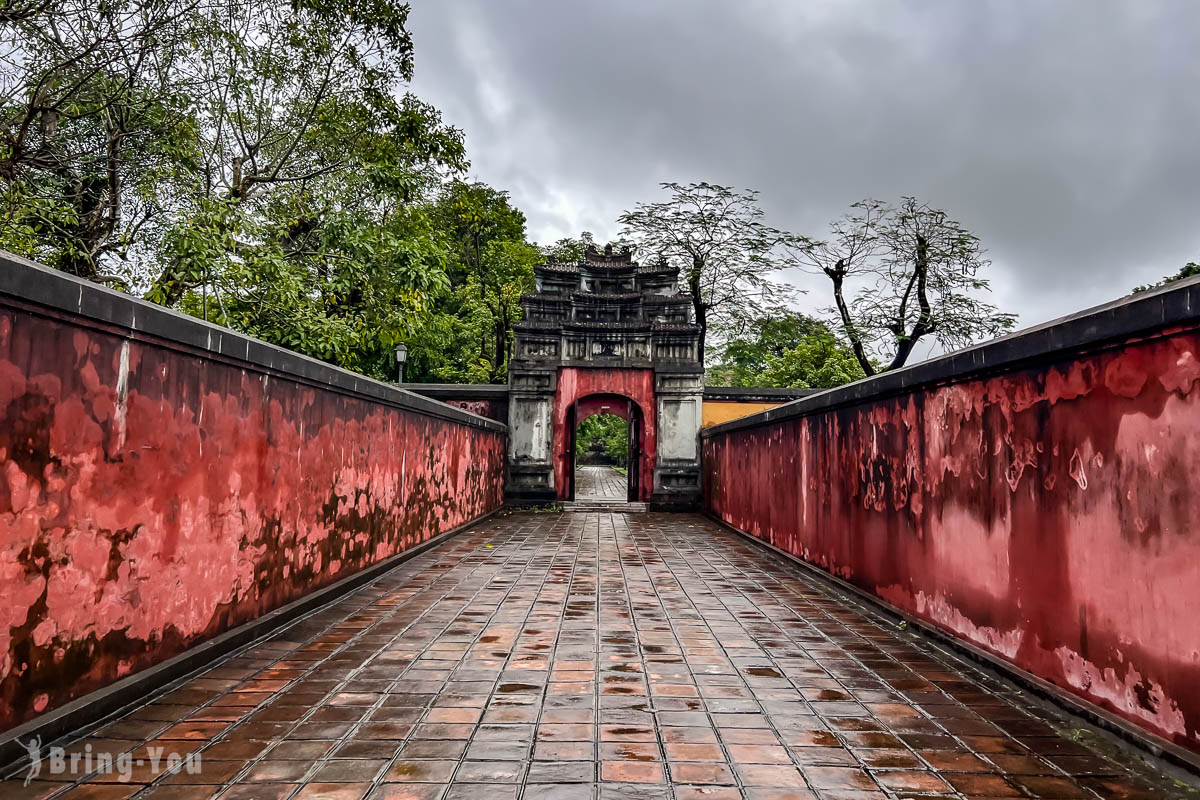
Hue is not a crowd-pleaser. Whether or not it’s a must-see destination in Vietnam isn’t worth the talk. If you’re a history buff like me, Hue is definitely worth spending two full days. Trust me, you need a guide for Hue. There’s so much history to it worth learning and the untold stories or even myths of the past will be in your mind for years.
